
Interview with Sou Fujimoto at reSITE 2018
Source
Zdeňka Němcová Zedníčková
Zdeňka Němcová Zedníčková
Publisher
Petr Šmídek
27.06.2018 20:25
Petr Šmídek
27.06.2018 20:25
Czech Republic
Prague
Karlín
Sou Fujimoto
Just like last year, the biggest star of the Prague conference reSITE 2018 was a Japanese architect. After Kazuyo Sejima, it was a generation younger architect, whom we could see during the program of the second day of the conference not only through his lecture “Between Nature and Architecture” or in the final discussion panel, but also very closely during an informal conversation on the topic “What I've Learned with...” in the foyer of Forum Karlín. Sou Fujimoto is among the world's most renowned Japanese architects born in the 1970s, greatly attributed to his book “Primitive Future”, published in 2008, or the realization of the temporary pavilion at Serpentine Gallery in London from 2013. He has many achievements and architectural competition wins to his name.
In the packed program of the conference, there was a moment when Sou Fujimoto provided us with a short interview. The interview was conducted by Zdena Zedníčková from the Faculty of Art and Architecture in Liberec.
zz: In one of your lectures, you mentioned that you try to create things that appear to be unplanned. Is controlled nature adjusted in the desired direction part of this concept? Or is there room for uncontrolled and unexpected growth?
FUJIMOTO: An interesting aspect of nature is that we cannot control it 100%, but that does not mean we let it grow uncontrollably. As I said, it is an important point for me to connect people, nature, and architecture. And this communication becomes richer if nature or architecture behaves unexpectedly or unpredictably because that is something that exceeds our minds. Then it is possible to discover something new or notice something that you have never thought of before. I believe that such encounters with unexpected things are beautiful.
In the packed program of the conference, there was a moment when Sou Fujimoto provided us with a short interview. The interview was conducted by Zdena Zedníčková from the Faculty of Art and Architecture in Liberec.
zz: I would like to start our interview with “the forest,” because you often talk about the forest and relate your projects to it. Can it be said that the forest, with all its layers of meaning, is at the core of your work?
FUJIMOTO: The forest, of course, has many different layers and meanings. For me personally, the forest is my background. I grew up in Hokkaido and as a child, I often played in the wild forest. Of course, at that time, I didn’t think about architecture at all, but when I started studying architecture, I felt that the experiences from being in the forest have many meanings in relation to scale, diversity, and something that exceeds functionality. And, of course, the contrast between Tokyo, where I studied architecture, and the natural environment in which I grew up was very interesting. In the center of Tokyo and in its residential areas, we do not find such extensive areas of wild nature, but still, walking through the small streets of the city and weaving through their twists felt almost like walking in the forest. I think that's because we are also surrounded by small elements here – in the forest, there are leaves, branches, and small bushes; in Tokyo, they were small man-made objects seemingly floating in space – signs, advertisements, and dense bundles of electrical cables. I felt that the forest is not just a forest, but a structure hidden within it, a place where you are surrounded and protected by a system of small elements of human scale, but at the same time, it is an open space where everyone can choose their path and their activities. It can be a place that, through its diversity, inspires; in this variety, you choose your route, your places of stay, and how you experience it. In this sense, for me, the forest is an iconic word that represents the foundations of architectural thinking and the foundations for considering the connection between architecture and nature. And also a base for creating something that transcends ordinary functional thinking about architecture, which is why I like it so much.zz: The forest could perhaps also relate to your fearlessness... in the Czech Republic, we have a saying connected with the forest: “who is afraid, should not go into the forest,” which reminds me of your earlier statement that “you are not afraid of anything in architecture, that you feel free to do what you want and welcome all challenges.” Do you still maintain this sense of courage?
FUJIMOTO: I understand it as the case that in European countries, the forest has a touch of danger and that you need to be brave enough to enter it; perhaps, though, I see the forest more from the perspective of Japanese culture, where it is very close to human life. In any case, I truly do not fear challenges; I am not afraid to do things, but at the same time, I really like to respect the existing cultural background or lifestyle in different cultural situations or climatic conditions. So on the one hand, I really like to respect the history, culture, or lifestyle that lies behind each different context, but at the same time, I want to be brave enough to reinterpret the fundamental elements of this context and try to create something new, something that is truly new but at the same time is in harmony with the history and culture of the given place. In this sense, the challenge is not only to be brave enough, but to be sensitive and respectful.zz: Given that you lead an architectural office not only in Tokyo but also in Paris and are realizing many projects across Europe, how do you perceive and cope with such different contexts? Japanese urban environments are often perceived as very dynamic and non-homogeneous, while European ones are seen as relatively stable and regulated. Do you sometimes worry about the strong historical context of Europe, and how does this difference in environments reflect in your approach to projects?
FUJIMOTO: In fact, when you think about the basic foundations and beginnings of architecture, these outward differences in context are not such a big problem. Because when, for example, you consider human behavior in relation to architectural spaces or their relationship to the surrounding context, these foundational aspects do not change much considering different places. So, as far as I am concerned, I feel that I am not too bound to these outwardly apparent characteristics of the Japanese context, but rather to something that is in its essence. Each time, I really enjoy discovering something that differs from my cultural background, something I could respect and from which I could draw inspiration. France is so different and has a truly admirable cultural heritage, so when I think about how to respect this environment while also bringing something new to it, it is a creative challenge for me. I perceive a similar situation globally, and I think it is very important to respect all local conditions. I believe that the coexistence of globally produced architecture and respect for the local is possible.zz: The issue of aging buildings is also related to different cultural contexts. In the Japanese urban environment, buildings are replaced by new ones in a much shorter time span than in Europe. It also seems that there is not such a burden of feeling the necessity to preserve buildings for future generations and the associated care for aging. Do you take this aspect into account, for example, in terms of using different materials in projects in Japan and in Europe concerning its historical architecture?
FUJIMOTO: Even in Japan, we pay attention to the aging of buildings; constructions are not so temporary; they should last as long as possible. From a European perspective, they may seem temporary, but that is not the case. Of course, the use of materials in these cultures is different, but fundamentally our starting point is the intent to create something valuable for the future.zz: Your buildings are very often connected to nature, as already mentioned in relation to the forest, and they are literally intertwined with trees. Architecture is a stable element for you, but nature is dynamic and growing. How do you perceive this contrast between the stable and the changeable parts? Do you not worry that nature will engulf your buildings, that the building will essentially disappear within it?
FUJIMOTO: Of course, if we let these natural elements grow freely, it could destabilize the structure and lead to the building collapsing. However, I believe that architecture should be connected to human life, and thus daily life and daily care for nature, just like for the building itself, should be in harmony. Engagement and involvement of people transform everything. Of course, nature and architecture have different lifespans, but I believe that if people love their environment, they will take care of it.zz: I mention this because I saw a recent photograph of your House N, which you colloquially call “box in box in box,” and the tree that was originally sparse is now immensely growing through the openings of the outer box. Do you consider green space in your projects as another architectural compositional element, with its changing mass and shape?
FUJIMOTO: Certainly, I envisioned that the tree would grow and pass through the openings of the outer box, but at the same time, it is necessary to care for the tree because if it becomes too dense, it would overshadow too much. Even in Europe, you expect that if you take care of greenery, it is healthier. When communication with nature, with trees through caring for them becomes a part of our lives, then this care for the natural environment enriches our lives. To participate in the life's processes of nature, its cycle must be fantastic.zz: So for you, in the end, is it more important to create a close relationship between humans and the natural element, specifically the tree, than its use as an architectural element?
FUJIMOTO: What I fundamentally aim for is to ensure that human life is actively connected with the life of the building and the life of the related natural elements. Human life is already part of architecture, and architecture is part of human life. When caring for architecture and caring for greenery is part of a person's life, when they communicate with them and they are not separated from each other, then I think it results in a beautiful life.
FUJIMOTO: An interesting aspect of nature is that we cannot control it 100%, but that does not mean we let it grow uncontrollably. As I said, it is an important point for me to connect people, nature, and architecture. And this communication becomes richer if nature or architecture behaves unexpectedly or unpredictably because that is something that exceeds our minds. Then it is possible to discover something new or notice something that you have never thought of before. I believe that such encounters with unexpected things are beautiful.
zz: Does this also relate to your concept that you call “System less System”?
FUJIMOTO: Yes, I have tried this concept, but it is not finished. Because a system is necessary; we need a program, but at the same time, I like to create something that transcends this system. The experience of space thus becomes much more diverse. This allows for the coexistence of order and chaos, if you manage to find the right balance between them.zz: You also test the diversity of spatial experiences on the concept of “Gradient Space”...
FUJIMOTO: Yes, all the concepts of “Gradients”, “Ambiguities”, or “Form less Form” are attempts to achieve the right balance between nature and architecture or controllable and uncontrollable things, to mix them so as to create a complex and diverse environment for living.zz: It seems that these concepts of “Gradients” and “Ambiguities” stem from the traditional Japanese space “Engawa,” which you often refer to as well? How do you work with this concept in your non-Japanese realizations?
FUJIMOTO: I believe that such “in-between spaces” ( “In between spaces” ) and Engawa is essentially such a “between-space”, half inside, half outside, which we can find around the world, depending on climate and lifestyle. In Spain, Portugal, the Mediterranean, or in many Asian countries, such spaces commonly occur. “In-between spaces” have great potential for use in various climatic conditions due to the way they balance the natural and architectural environments. It is very interesting to creatively develop this fundamental idea because it is not about transferring this Japanese typology to other countries, but rather about developing it through inspiration from local conditions into a new variant of “in-between spaces”.zz: When we talk about openness and interconnectedness of spaces, which significantly relates to privacy. I have heard from other Japanese architects that Japanese perception of the concept of privacy differs from the Western one, and that Japanese people strive for a different kind of privacy. How do you perceive the concept of privacy?
FUJIMOTO: I am not entirely sure that Japanese people are that different. I rather think that people, regardless of where they come from, fundamentally share similar feelings regarding privacy, even though of course there are slight cultural differences. When discussing privacy, contemporary life in Japan is almost the same as in Europe or globally. Most people want privacy defined by walls, smaller or fewer windows, and so on. Of course, in traditional Japanese culture, thinking about privacy was different. For me, it is somewhat exotic. Privacy was defined only by thin sliding walls, translucent layers, layering that created a certain distance of one person from another, or private from public. In fact, even I look at these traditional spaces as something new and different and try to creatively reinterpret them in the spirit of contemporary culture. It is not so much about the difference between Japanese and European culture for me but rather that each individual culture has its uniqueness. And the creative reinterpretation of these differences allows us to share and inspire each other.zz: Finally, I would like to ask you how you perceive the role of the “Global” architect in the current world of shared information, whether it differs from the role of an architect acting only locally or from earlier pre-internet generations? Does this role bring with it any new responsibilities?
FUJIMOTO: If we go to the very basics of this profession, I believe that this role has not changed much. We create places for people, and we create spaces where people can live better. Fundamentally, I believe that our role is to create space for better living, respecting the local context, creating new possibilities, and discovering new potential for life, bringing diversity so that people can choose. I truly believe in these fundamental principles of architecture.Mgr.A. Zdeňka Němcová Zedníčková, Ph.D.
The English translation is powered by AI tool. Switch to Czech to view the original text source.
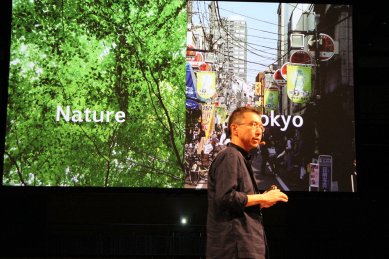
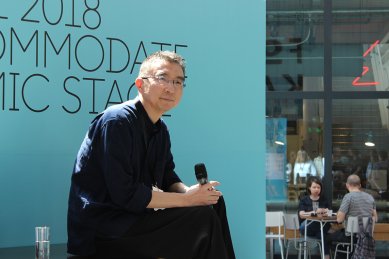
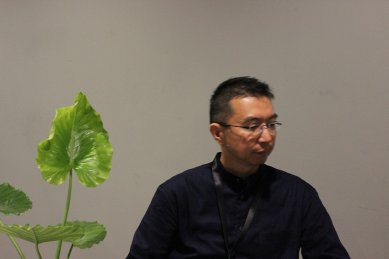
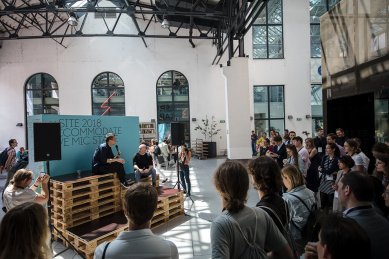
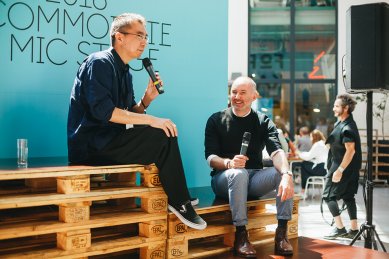
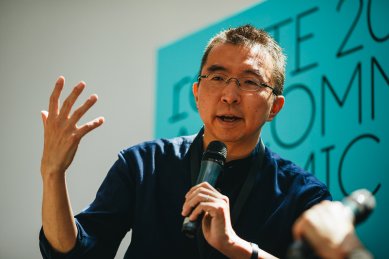
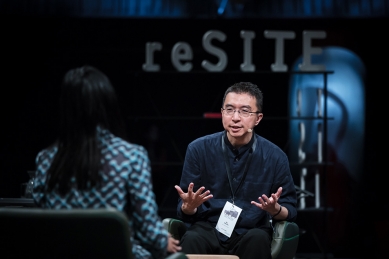
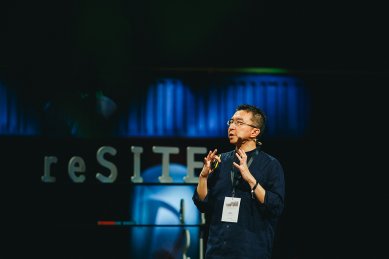
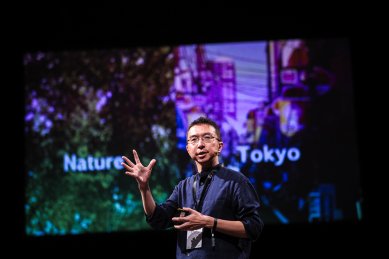
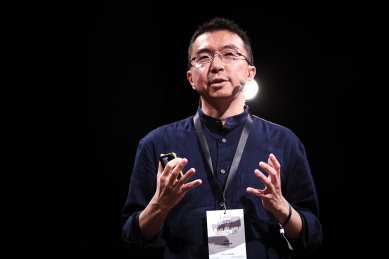
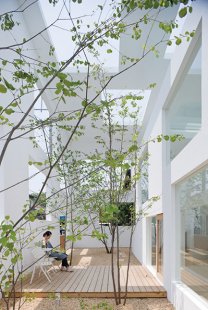
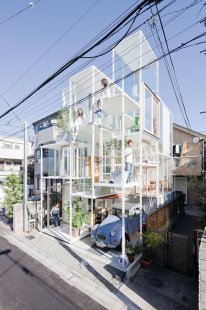
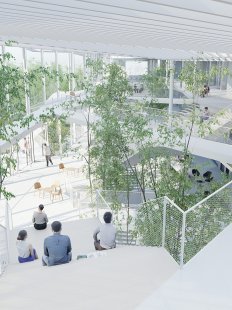
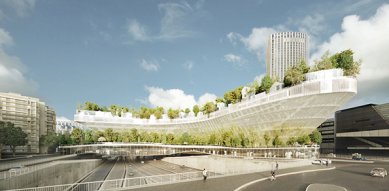
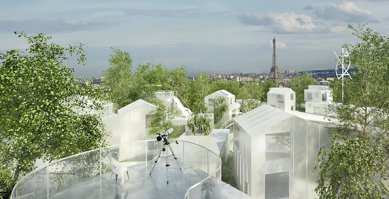
0 comments
add comment
Related articles
0
14.07.2023 | Sou Fujimoto: Primitive Future - Everything is circulating
0
28.03.2019 | Fujimoto: The future lies in the connection between nature and architecture
0
26.03.2019 | Architect of the world's best upcoming project, Sou Fujimoto, is competing for the opportunity to build in Prague
0
14.06.2013 | Summer Pavilion Serpentine Gallery 2013 by Sou Fujimoto
0
19.12.2011 | 21 Century Oasis v Taichung by Sou Fujimoto











